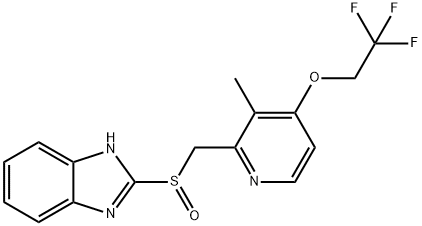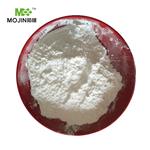Lansoprazole is in a class of drugs called proton pump inhibitors (PPI) which prevent the stomach from producing gastric acid.The other drugs in PPI family include:
- rabeprazole (Aciphex),
- omeprazole (Prilosec),
- pantoprazole (Protonix),
- esomeprazole (Nexium).
Proton pump inhibitors are used for the treatment of conditions such as ulcers, gastroesophageal reflux disease (GERD) and Zollinger-Ellison syndrome that are caused by stomach acid. Lansoprazole, like other proton-pump inhibitors, blocks the enzyme in the
wall of the stomach that produces acid. By blocking the enzyme, the production of acid is decreased, and this allows the stomach and esophagus to heal.
Lansoprazole is a proton pump inhibitor (PPI) similar to omeprazole that inactivates the hydrogen/potassium-stimulated ATPase pumps in parietal cells, thus inhibiting gastric acid secretion and increasing intragastric pH. It is a potent inhibitor of gastric acidity which is widely used in the therapy of gastroesophageal reflux and peptic ulcer disease. Lansoprazole is a racemic mixture of (R)- and (S)-isomers. Dexlansoprazole is an isomer of lansoprazole that has a similar spectrum of activity and toxicities. Lansoprazole therapy is associated with a low rate of transient and asymptomatic serum aminotransferase elevations and is a reported, but very rare cause of clinically apparent liver injury.
Lansoprazole's plasma elimination half-life is not proportional to the duration of the drug's effects (i. e. gastric acid suppression). The plasma elimination half-life is 1. 5 hours or less, and the effects of the drug last for over 24 hours after it has been given for 5 days or more.
Lansoprazole is a prescription medicine used to treat:
- gastroesophageal reflux disease (GERD)
- erosive esophagitis
- stomach ulcers
- duodenal ulcers
- H. Pylori infections
- Zollinger-Ellison syndrome
Gastric acid secretion inhibitor
R-(+)-Lansoprazole is the dextroisomer of lansoprazole and a kind of anti-ulcer drug. It is the substitution product of benzimidazole derivative byimporting the fluorine element in the molecular structure and the is the second proton pump inhibitor after omeprazole. R-(+)-Lansoprazole has a better inhibitory effect for gastric acid secretion than that of other drugs (omeprazole, pantoprazole, rabeprazole) and it can significantly inhibit ulcer. It has a better Curative effect for ethanol-induced gastric mucosa lesion and acid hypersecretion induced duodenal ulcer than that of famotidine and omeprazole. In addition, This product also has an anti-Helicobacter pylori effect similar to that of Bismuth preparations and can be used to treat reflux esophagitis and Zollinger-Ellison syndrome.
pharmacodynamics
R-(+)-Lansoprazole can transform into active sulfonamide derivatives. In the tubule acidic environment of parietal cells, which are connected to the sulfydryl of H+-K+-(ATP)adenosine triphosphatase(the last step of the enzyme catalyzed gastric acid secretion process),passivat H+-K+-ATP enzyme and Inhibit the gastric acid secretion regulated by central and peripheral nervous systems. The inhibition effect of gastric acid secretion of this product is at least as strong as omeprazole. In vivo studies of animal model have demonstrated that the inhibition effect for gastric acid secretion of R-(+)-Lansoprazole is inferior to H2 receptor antagonist ranitidine and famotidine, but just as effective as omeprazole. Unlike the H2 receptor antagonist, whether taken in the morning or evening, this product can inhibit gastric acid secretion during the day and night. It can also reduce the gastric acid secretion, inhibit the secretion of pepsin and its activity and clear pyloric campylobacter on gastric mucosa (A bacterium of causing recurrence. of peptic ulcer).
It can also be used to treat Helicobacter pylori infection, alongside antibiotics as adjunctive treatment, to kill H. pylori causing ulcers or other problems involves using two other drugs known as "triple therapy", and involves taking twice daily for 10 or 14 days lansoprazole, amoxicillin, and clarithromycin.
When this product transform into active AG-1812 and AG-2000, R-(+)-Lansoprazole in serum is metabolized quickly and completely into two main faeces: Lansoprazole sulfone and hydroxy orchid sola. About 14%~23% of doses are excreted in the urine as conjugated and non-conjugated hydroxylation metabolites and no prototype of this product is found. The half-life of this product is 1.3~1.7 h, about 2 h for elderly people and as long as 7 h for patients with severe liver failure. The Peak blood concentration can reach 1038μg/L within 2 h after taking 30 mg enteric capsules of this product.
Marketing internationally
The lansoprazole molecule is off-patent and so generic drugs are available under many brand names in many countries;there are patents covering some formulations in effect as of 2015.
Since 2009, lansoprazole has been sold over the counter (OTC) in the U.S. in a marketed by Novartis as Prevacid 24HR. In Australia, it is being marketed by Pfizer as Zoton.
Applied to reflux esophagitis, gastric ulcer, duodenal ulcer. Patients with duodenal ulcer take this product 30 mg a day for a period of 2~4 weeks. An cure efficiency rate of 75%~100% can be achieved.It cures faster than famotidine and omeprazole and reduces ulcers-induced pain faster thanranitidine. Taking this product 30 mg a day can effectively treat reflux esophagitis and the cure rates after 4 weeks and 8 weeks can reach 63%~84% and 85%~92% respectively. The cure effect for reflux esophagitis of this product is better than ranitidine and comparative to omeprazole. After 4 weeks treatment, the alleviation effect for heartburn symptoms of this product is much better than that of ranitidine and omeprazole. R-(+)-Lansoprazole can effectively treat patients with Peptic ulcer and reflux esophagitis whom cannot be cured by H2 receptor antagonist. A cure rate of 69%~100% can be achieved by taking this product 30 mg a day for a period of 8 weeks. A higher cure rate can be achieved if the dosage is increased to 30mg a day.
1. Take R-(+)-Lansoprazole in conjunction with acetaminophen can increase the Peak blood concentration and shorten the time to peak.
2. Take R-(+)-Lansoprazole in conjunction with Roxithromycin can increase the local concentration of the latter and has a synergistic effect when treating Hp infection.
3. Take R-(+)-Lansoprazole in conjunction with antacids can reduce the bioavailability of this product. If necessary, this product should be taken after 1 hour use of antacids.
4. Take R-(+)-Lansoprazole in conjunction with theophylline can slightly reduce the blood concentrations of theophylline.
5. R-(+)-Lansoprazole can inhibit gastric acid secretion significantly and persistently, thereby reduce the absorption of itraconazole and ketoconazole. So they should not be used at the same time.
6. Sucralfate may interfere the absorption of this product and reduce its bioavailability. So this product should be taken at least 30 minutes before taking sucralfate.
7. Take R-(+)-Lansoprazole in conjunction with clarithromycin may cause Glossitis, stomatitis and black tongue. Patients should pay attention to the change of oral mucosa , stop using clarithromycin and reduce the dose of this product if necessary.
This product can cause constipation, diarrhea, dry mouth, abdominal distention, anemia, increased white blood cells and eosinophils, thrombocytopenia, elevated liver enzymes, headache, drowsiness, insomnia, skin rashes, itching, etc., and occasionally cause fever, increased total cholesterol and uric acid value, etc.
1.This drug is forbidden for those who are allergic to this product, pregnant and lactant women. Patients with a history of drug allergy
and hepatic insufficiency should use this product with caution.
2.Elderly patients with medication must be closely observed
3.This product may mask the stomach cancer symptoms. Therefore, this product should be taken before excluding stomach cancer.
Lansoprazole is a proton pump inhibitor that inhibits the H+/K+-ATPase. It inhibits K+ and H+ accumulation in gastric microsomes in a concentration-dependent manner (IC50s = 6.3 and 7.0 μM, respectively) and inhibits H+/K+-ATPase activity by approximately 60% when used at a concentration of 10 μM. Lansoprazole inhibits the H+/K+-ATPase in parietal cells, thus inhibiting gastric acid secretion and increasing intragastric pH. It is a substituted benzimidazole that binds covalently to proton pumps, providing complete and prolonged inhibition of acid secretion. Formulations containing lansoprazole have been used as a proton pump inhibitor and in combination with antibiotics in the treatment of H. pylori infections and duodenal ulcer disease.
Lansoprazole is the second proton pump inhibitor approved as an antiulcer agent for the
short term treatment of duodenal ulcer and gastroesophageal reflux disease. Like
omeprazole, lansoprazole is reported to be more efficacious than the H2-antagonists in treating peptic ulcer disease.Other potential uses could be in the treatment of Zollinger-Ellison syndrome.
For the treatment of acid-reflux disorders (GERD), peptic ulcer disease, H. pylori eradication, and prevention of gastroinetestinal bleeds with NSAID use.
A H+,K+-ATPase inhibitor that displays antisecretory activity
Used as a gastric proton pump inhibitor. An antiulcerative
Treatment of gastroesophageal reflux disease (GERD), erosive esophagitis, duodenal ulcers, Helicobacter pylori (H. pylori) infections,stomach ulcers, prevention of stomach ulcers in those people taking non-steroidal anti-inflammatory drugs (NSAIDs), such
ChEBI: Lansoprazole is a member of benzimidazoles, a member of pyridines and a sulfoxide. It has a role as an EC 3.6.3.10 (H(+)/K(+)-exchanging ATPase) inhibitor and an anti-ulcer drug.
Preparation of 2-[3-methyl-4-(2,2,2-trifluoroethoxy)-2-pyridyl]methylthio-1H�benzimidazole:
A mixture of 6.63 g of 2-hydroxymethyl-3-methyl-4-(2,2,2-trifluoroethoxy)
pyridine (30 mmol), 4.5 g of 2-mercaptobenzimidazol (30 mmol) and 8.67 g
of triphenylphosphine (33 mmol) was dissolved in 100 ml of tetrahydrofuran,
5.75 g of diethyl azodicarboxylate (33 mmol) dissolved in 30 ml of
tetrahydrofuran was added dropwise thereto at room temperature, and stirred
for 1 hour. The reaction mixture was concentrated under a reduced pressure,
the resulting residue was combined with 100 ml of ethylacetate, and extracted
twice with 50 ml portions of 1 N HCl. The aqueous layer was then washed
with 50 ml of diethylether; neutralized with 1 N NaOH to adjust the pH to 7.
The resulting precipitates were filtrated, washed with water, and dried, to
obtain 10.06 g of 2-[3-methyl-4-(2,2,2-trifluoroethoxy)-2-pyridyl]methylthio-
1H-benzimidazole as a white solid (yield: 95%), m.p.142-144°C.
4.46 g of 2-[3-methyl-4-(2,2,2-trifluoroethoxy)-2-pyridyl]methylthio-1H�benzimidazole (12 mmol) and 18.74 mg of tetramethyl-1-piperidinyloxy free
radical (1 mol %, used as a catalyst) were dissolved in 40 ml of
tetrahydrofuran, and combined with 166.76 mg of tetrabutylammonium
chloride (5 mol %) dissolved in 20 ml of distilled water. The resulting mixture
was cooled to 0°C and 13.6 ml of NaOCl (12%, 2.2 equivalent) dissolved in 20
ml of distilled water was added thereto over 2 hours at 0°C, stirred for 10
min, and then for additional 10 min at 20°C. Then, the reaction mixture was
extracted with 40 ml of ethylacetate and the organic layer was washed with
sat. NaHCO3 (30 ml) and then with sat. brine (30 ml), dried over anhydrous
MgSO4, and the solvent was removed therefrom. The resulting crude product
as recrystallized from acetone/hexane, to obtain 3.99 g of 2-[3-methyl-4-
(2,2,2-trifluoroethoxy)-2-pyridyl]methylsulphinyl-1H-benzimidazol
(lansoprazole) as a white-light brown solid (yield: 90%), melting point 164-
165°C (decomposition).
Prevacid (TAP);Ogast;Lanzor.
Lansoprazole, 2-[[[3-methyl-4-(2,2,2-trifluoroethoxy)-2-pyridyl]methyl]sulfinyl]-1H-benzimidazole(Prevacid), is a white to brownish white, odorless crystallinepowder that is practically insoluble in water.Lansoprazole is a weak base (pyridine N, pKa 3.83.) and aweak acid (benzimidazole N-H, pK 0.62). Like other PPIs,lansoprazole is essentially a prodrug that, in the acidic biophaseof the parietal cell, forms an active metabolite thatirreversibly interacts with the target ATPase of the pump.Lansoprazole must be formulated as encapsulated entericcoatedgranules for oral administration to protect the drugfrom the acidic environment of the stomach.
In the fasting state, about 80% of a dose of lansoprazole(vs. 50% of omeprazole) reaches the systemic circulation,where it is 97% bound to plasma proteins. Thedrug is metabolized in the liver (sulfone and hydroxymetabolites) and excreted in bile and urine, with a plasmahalf-life of about 1.5 hours.
H + ,K + -ATPase inhibitor (IC 50 = 6.3 μ M) that displays antisecretory and antiulcer activity. Inhibits gastric acid secretion (IC 50 = 0.09 μ M for histamine-induced acid formation) and reduces gastric lesion formation induced by a variety of ulcerative stimuli. Antibacterial against Helicobacter pylori in vitro . Also blocks swelling-dependent chloride channel (ICIswell) in NIH3T3 fibroblasts. More potent than omeprazole (5-Methoxy-2-[[(4-methoxy-3,5-dimethyl-2-pyridinyl)methyl]sulfinyl]-1H-benzimidazole ).
Gastric proton pump inhibitor.



